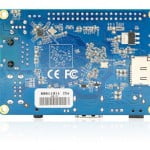
While most people are talking about the (super awesome) 4K technology for the newest batch of televisions, I’m focused on the smart technology and what it could mean for home automation. Some people use smart TVs now, and some use streaming or video game devices, which give them more smart functionality. Up until recently, these streaming devices have offered additions like connecting to their music and photo libraries; but the future of your streaming device might mean it works double as a smart home hub. So are TVs the new smart home hub? Let me explain what I mean by that.
Amazon recently released their new 4K Fire TV, which has home assistant capabilities similar to the Echo smart speaker. Now, you can use the microphone on your Fire TV remote to search for shows, movies, and actors; ask for a weather update; check sports scores. Right now, using the voice search will interrupt and take over your screen. You’ll have to manually exit the update to return to what you were watching, but your video will auto play from where you left off.
While this technology is still new – and it is true that the Fire TV can’t do everything the Echo can do – it is an exciting update to see from Amazon. This update means that there will be more updates to follow. I’m hoping to soon see the Fire TV catch up with the Echo’s home automation services, including being able to control your lights, or whatever you plug into the supported smart home switches, with your voice.
There are some apps for smart TVs that allow you to do home automation, but the Fire TV doesn’t need an app. The device itself has a built in app that might soon be ready to work with your home right out of the box.
How would a smart TV smart home hub work? Well, Amazon has partnered with companies like WeMo and Philips Hue, and now supports their home devices. Once you connect your home device to your Amazon home assistant (right now, just the Echo), you are good to go with wireless lighting and switch controls. Your Amazon device is cloud-based, and your home automation device connects to it with WiFi. These home automation devices will work without the Amazon device, or course, but the Amazon devices is the middle man that allows easy, convenient voice control.
While TVs aren’t ready to be a viable threat to existing smart home hubs, they are coming out as a contender. If there was an easy way for me to use my TV to see unobtrusive in-screen home updates, or to use my voice to control lights without interrupting my screen, I’d be throwing my money at the product.
[“source-House-o-matic”]











